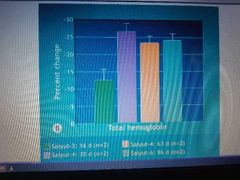![]()
![]()
![]()
Use LEFT and RIGHT arrow keys to navigate between flashcards;
Use UP and DOWN arrow keys to flip the card;
H to show hint;
A reads text to speech;
26 Cards in this Set
- Front
- Back
- 3rd side (hint)
|
Who was the first person to do EVA-extra vehicle activity? When? |
Leonov 1965 |
|
|
|
Who was the first man In space? When? |
Gagarin 1961 |
|
|
|
Are we sensitive to speed? |
No we are moving at 108000 km/h through space we dont notice The earth rotates at 17000 km/h we dont notice this either We are actually sensitive to acceleration and deceleration |
|
|
|
What are the two types of acceleration? |
Linear acceleration- where direction is constant but the speed changes Radical acceleration-speed is constant but your direction constantly changes |
|
|
|
What is 1g? In m/s2 what does it mean? |
1g= 9.8 m/s2 Shows for every Second what your speed will be whilst falling |
|
|
|
If I jump out a plane what prevents my speed from continually increasing? |
Air resistance terminal velocity=55-60 m/s2 |
|
|
|
How do you achieve minus 1G |
Stand on your head the 1g goes to your head instead of legs. If you increase the G force to the head the pressure could cause problems in the brain |
|
|
|
Fair rides go up to about 3G but how do I get to very high G? |
Put the person in a centrifuge |
|
|
|
What is the G force of a military aircraft and a ejector seat? |
Aircraft= 8G ejection seat=25G |
|
|
|
What does eye balls in and eye balls out refer to in terms of G |
Eye balls in +v G eye balls out -ve G |
|
|
|
What happens with very high G 12G? |
Loss of consciousness and convulsions
GLOC=G INDUCED LOSS OF CONSCIOUSNESS
AGLOC=ALMOST G INDUCED LOSS OF CONSCIOUSNESS the G force also pulls your diaphragm down so lower part of lungs is unable to pull it back up to squeeze air out lungs. 02 levels can drop in the top of lungs and there is bad air in bottom of lungs (Not good) |
|
|
|
Name a clever countermeasures for G force |
1.A suit that has canals that have liquid in it so as G increases the liquid also moves to legs which squeeze the legs preventing the legs from having blood pooling maintaining blood flow to the brain.(Libelle suit) The same can be done for Air 2. Horizontal seating 3. Breathing and straining exercises |
|
|
|
Who was a pioneer in deceleration research? |
Colonel John strapp volunteered himself to a lot of extreme experiments to see what happens to the body with extreme deceleration |
|
|
|
When is the G force a main issue during space take of? Name any other issues with rocket travel |
Not straight away usually as the shuttle enters orbit 6-8G for 60seconds
Vibration can cause nausea and also makes it hard to steer Also body resonating frequency could be achieved which is high strain on the body |
|
|
|
So on Earth the G force was 9.8 m s2 however in space there is less gravitational pull what is the moons g force and Mars g force? What defines the gravity experienced |
Moon= 1.6 m s2 Mars=3.7 m s2 The mass of the 2 objects e.g mass of the moon and mass of the shuttle |
|
|
|
The blood is pushed upwards during microgravity. What are the symptoms |
Puffy face Eyes bulging Blocked nose (swollen mucous membrane) Diminished taste and smell Legs shrink Less blood volume |
|
|
|
Blood volume drops in microgravity what is the problem when people return to gravity? |
They have less blood volume so blood pressure drops and can sometime faint and feel dizzy |
|
|
|
What happens to total haemoglobin as number of days at microgravity increase? |

The amount decreases due to 1.decreased EPO and production 2.Active breakdown of haemoglobin
You can see this is most apparent between 16 and 30 days but reduces 30 and 63 days |
|
|
|
What happens to height and posture with microgravity? |
Increases one person grew by 6cm And the joints move to their mid point so COG changes and shoulders become slightly more backwards and |
|
|
|
Why do you have weight loss with microgravity? How do you measure the mass in space? |
You have decreased weight with microgravity, due to fluid loss and decreased appetite. They measure the mass by measuring the momentum of the body. You can get on a swing and look at the frequency. |
|
|
|
Name some physiological changes with microgravity |
1.fluid loss, smaller heart= due to the blood that is there being better distributed and also the heart doesn't have to pump against gravity so doesn't need to be as big and strong. 2.loss of bone mass = (1%/month) little impact on the weight bearing bones 3. Loss of muscle mass= things are a lot easier in space. You lose strength. 4.postural control/eye movements = you dont use your proprioception as much they tend to use their eyes to see where they are 5. High risk of kidney stones= more bones are broken down which means more calcium is in the blood stream and more excreted in the kidney 6. Space sickness= 2/3 of all astronauts get some level of motion sickness. Nausea headaches, sudden vomiting. Due to a sensory conflict look at the picture |

|
|
|
What is another way other than going to space to study the effects of microgravity? |
1.Getting people to stay in bed for a very long time. So the same adaptations occur 2. Parabolic flights= plane goes up very steep then nose dives so you get free fall which creates microgravity 3. Can practice under water with the space suit |
|
|
|
Name some countermeasures to prevent negative effects in microgravity |
Use a vessel that seals around the lower body. Sucks blood from the top into the bottom of the body. (Lower body negative pressure) 2.fluid electrolyte replenishment on return to gravity 3. Exercise whilst in space 4. Medication against motion sickness 5. Adaptation trainers (seat that rotates) 6.diet |
|
|
|
What can the temperature range between on a space walk? How do we mitigate against this? |
120 and -120 Use a climate system in the suit (waterperfused suit) can heat different areas of the suit |
|
|
|
A suit is at 1 atmospheric pressure. And outside is 0 atmospheres. What happens to the suit and why? |
It would swell up think of the cycle tire. |
|
|
|
If the suit is at 1/3 atmospheric pressure you are going from the space station 1 atm to 1/3 which is a factor of 3 which we know over 1/2 change in pressure can lead to decompression sickness. How do they get round this? |
Before the EVA reduce the pressure in the space station so less of a change and increase 02 levels in the space station so there is less nitrogen in their circulation. Less chance of bubbles |
|

